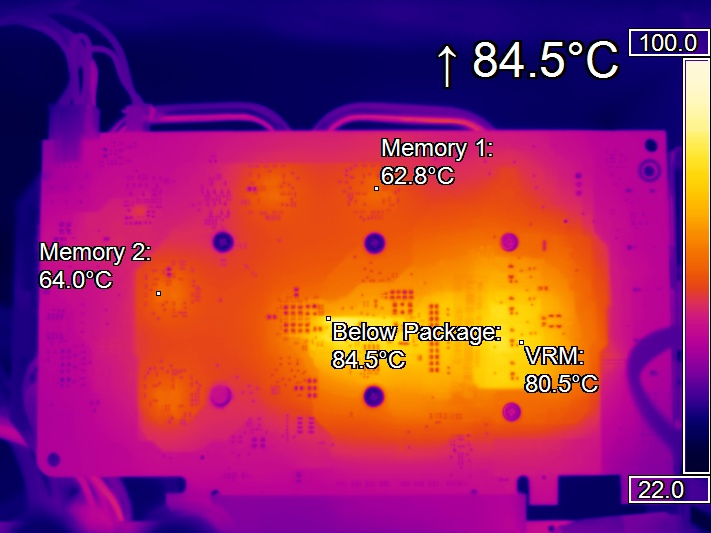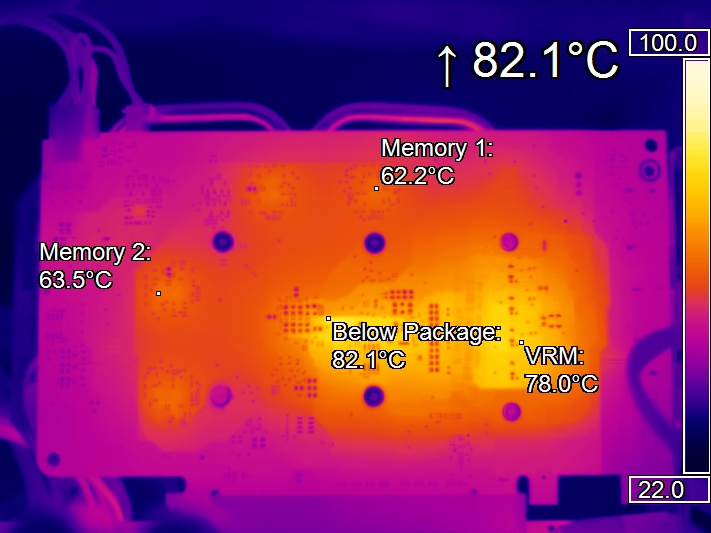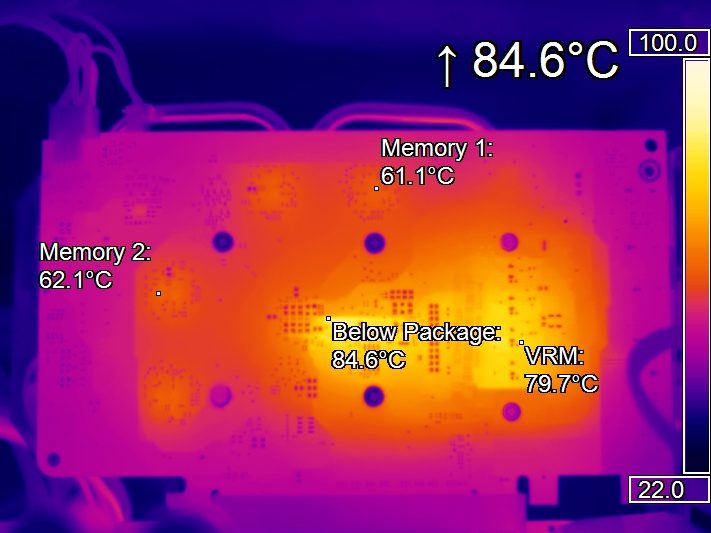3dmark
This synthetic, but also game-like benchmark suite is the bridge between reality and a pure stress test. Depending on the version, it can be run as a pure benchmark or as a stress test in the form of a definable loop. The program offers three benchmarks relevant to the PC, which are based on different performance classes for graphics cards. The download can be found here.
Fire Strike
The best-known and also freely available variant is the "Fire-Strike" benchmark. The utilization, power consumption and associated temperature development is very thin lynotally higher than the values from "The Witcher 3", whereby the memory is loaded a little more thermally. However, the benchmark run is not too long, so it is only worthwhile as a real stability test if you can run it as a loop (version-dependent) or at least start manually over and over again.

The after approx. 30 minutes of stable-encased temperatures also show on the board that you can really really really explore the maximum that can be achieved with pure game scenes. This means that it is also worthwhile for checking the graphics card stability and cooling. Below the Radeon RX 560 we tested, however, this benchmark hardly makes any sense in terms of performance. The more potent the graphics card, the higher the load, which can also be increased in "Extreme" or "Ultra" mode, depending on the performance class of the card.

| Gpu |
Package |
Vrm |
Memory |
Performance |
|
|---|---|---|---|---|---|
| Reading |
64 °C | 84.5 °C | 80.5 °C | 64.0 °C | 98.8 W |
| Compared to The Max. |
98.5% | 93.8 % | 94.8 % | 88.0 % | 95.3 % |
| Review | – very high power consumption – High GPU temperature for cooling test – sufficiently high package temperature for stability tests – medium storage temperature |
||||
| Suitability | – Power consumption measurements – good stability test for overclocking (loop) |
||||
Time Spy
This DirectX12-based benchmark does nothing better than "Fire Strike" when it comes to use as a stability or stress test, so you can give yourself the purchase for these concerns. Unless you have a high-end PC running Windows 10, a very strong graphics card and can use eight or more threads. Then you can use the Extreme version in Ultra HD and you don't even need a suitable monitor for it, but a graphics card with at least 4 GB of memory.

"Time Spy" doesn't quite reach the high load values of "Fire Strike", but it also heats up quite neatly. We would therefore prefer the DirectX11 benchmark. Nevertheless, some runs as a stability test can not hurt, because the API used deviates considerably from uniform porridge.

| Gpu |
Package |
Vrm |
Memory |
Performance |
|
|---|---|---|---|---|---|
| Reading |
63 °C | 82.1 °C | 78.0 °C | 63.5 °C | 96.7 W |
| Compared to The Max. |
96.9% | 91.1 % | 92.3 % | 87.3 % | 93.2 % |
| Review | – medium power consumption – Medium GPU temperature for cooling test – sufficiently high package temperature for stability tests – medium storage temperature |
||||
| Suitability | – usable stability test for overclocking (loop) | ||||
Sky Diver
Although "Sky Diver" is actually intended for mid-range PCs and better notebooks, many load values are often (just) higher than those of "Time Spy". So if "Fire Strike" is too hopping, then you can use weaker hardware as a replacement to bet on "Sky Diver" without hesitation.

In any case, the values for temperatures and power consumption we achieve are already quite useful for stress tests. If you overclock much and more extreme, you could also use "Sky Diver" as a stability test if "Fire Strike" doesn't run satisfactorily – but only then. Especially errors in the memory OC are more likely to occur in "Fire Strike", while a "Sky Diver" tends to weigh in safety.

| Gpu |
Package |
Vrm |
Memory |
Performance |
|
|---|---|---|---|---|---|
| Reading |
63 °C | 84.6 °C | 79.7 °C | 62.1 °C | 98.2 W |
| Compared to The Max. |
96.9% | 93.9 % | 94.3 % | 85.4 % | 94.7 % |
| Review | – medium power consumption – Medium GPU temperature for cooling test – sufficiently high package temperature for stability tests – medium storage temperature |
||||
| Suitability | – usable stability test for overclocking (loop) | ||||
- 1 - Einführung und Testsystem
- 2 - Witcher 3, Doom (2016), Metro LL
- 3 - 3DMark Fire Strike, Time Spy, Sky Diver
- 4 - Unigine Valley, Unigine Superposition
- 5 - Furmark, OCCT
- 6 - MSI Kombustor
- 7 - powerMAX, Aida64, Heavy Load
- 8 - Leistungsaufnahme und GPU-Temperaturen
- 9 - Komponenten-Temperaturen (Memory, VRM, Package)
- 10 - Zusammenfassung und Fazit

































Kommentieren